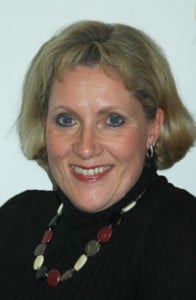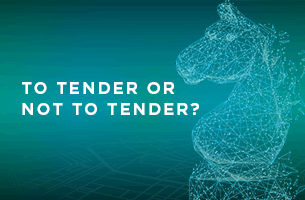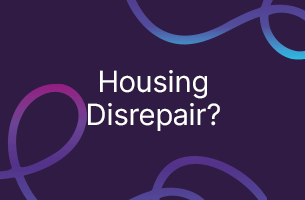Everyone in a law firm should be involved in sales and business development, says Kate Fleming of HuthwaiteFleming, and she explains how those who see themselves solely as service providers can help create value for clients
For law firms, as with other service-driven organisations, sales skills arguably touch more aspects of the business than any other skill-set. They have the greatest potential to impact a firm’s commercial performance – both positively and negatively. The bottom line is that without sales – more commonly defined as ‘business development’ within most legal practices – there is no business.
Sales belongs at the heart of the firm as a commercial philosophy, not siloed as a department. Whilst selling usually remains the domain of partners and the firm’s business development team, every member of staff has to appreciate the impact their own behaviour can have on the practice’s bottom line.
Positive behaviours have to be learned, retained and applied at every level – from the way incoming calls are handled, through to accounting and even the post room. This is more than simply good client service or delivering added value. It is about establishing real differentiation, by creating value – giving clients what they haven’t asked for – as a result of understanding and anticipating their needs.
This may require a fundamental culture shift for many firms, which will need to change behaviours to change results. Yet it is no longer just an optional ‘nice to have’; if you don’t do it, your competitors will.
Client touch points
So what happens in tough times when, because of economic uncertainty or lack of liquidity, clients simply stop seeing people who are trying to “sell” to them at all? If those directly responsible for developing business for the firm do not have the opportunity to create value, the answer must be your “service personnel”.
Almost every selling organisation has some group of external-facing people who do not have a direct sales responsibility and, in most cases, they will employ more of these “service” people than sellers. And these may well have the most regular and frequent access to your clients.
In addition, it is important to remember that it is not only senior managers or procurement professionals who influence buying decisions in a client organisation. Indeed, when every pound spent is being scrutinised, it is your day-to-day contacts – the clients your service people meet – who are the real judges of your quality. They are best placed to assess the value you create and are also the real key influencers when it comes to buying.
However, opportunity is only one of the things needed to create value. Whilst service may have opportunities in abundance, they may lack the other necessary attributes. So what are these other things your service people need?
Recognition, willingness, capability
Many service people, quite reasonably, see their role as simply that – service. They deliver the services wanted by the client, be it giving legal advice, issuing invoices or drafting documents, to a pre-agreed level. They deliver value in this way but see creating additional value as the responsibility of the partners or business development team.
So step one is getting support staff to accept they have a role in creating value and to develop an understanding of the role that service plays. Step two is to create a willingness within the service population to become more sales-orientated. And step three is to equip the service population with the skills and tactics it needs to have a positive sales impact.
So are we advocating that you turn your service people into sellers or business developers? Not at all. The reason many service people work in service is precisely because they enjoy client contact but do not want to sell. They have often made a conscious decision not to move into a business development role and are completely happy with that choice, so the chances of turning your service people into sellers is virtually nil.
Fortunately however, sales/service is not a binary state. You do not have to be one or the other, as there are shades of grey – what we call the service/sales continuum. As service operations progress along this continuum, they create more value for both client and seller.
The key is that each organisation – and, if necessary, each individual – can progress as far as their capabilities and willingness allow. Service does move closer to sales, but only as far as each person is both comfortable and willing to go.
Towards ‘sales through service’
So what are the stages along this continuum?
- Service: at its simplest, the client gets what they have asked for. They get the value they expect and the seller gets the agreed return. Any additional sales value – for example, the goodwill generated by a job well done – is intangible.
- Outstanding service: giving the client something above and beyond their expectations, often called “going the extra mile”, perhaps by delivering ahead of schedule. The client gets more value and the sales value, whilst still intangible, may be higher – such as the client telling a friend or associate of their good experience. For some, giving good service in the hope that you get more sales as a result may be enough. However, this is still rather passive and the vendor organisation can go further.
- Sales awareness: at this stage, the service person begins to look beyond the immediate service issue and actively seeks to create, or at least capture, potential tangible sales value. For example, this might relate to a change in direction within the client’s business or a frustration with part of the service provided by another service provider: in both cases this creates a potential new sales opportunity. Such information may then be fed back to the business development team to add further to their sales intelligence and perhaps to generate a sales lead. The client gets at least the same value as before and, by spotting potential problems or new benefits before they have been recognised by the client, there is the potential to create new, real client value too.
- Sales through service: here the service person begins to move to a more explicit business development role, not only looking for and identifying additional client needs but also offering solutions to them. The key is that the additional solution is sold, not simply given free to the client. The sales value is tangible and real – an extra sale (instruction) – and, by fulfilling a previously unrecognised need, real client value is also created.
- Sales: finally, within the business development function there is the full-blown role of selling – identifying client needs, developing and creating real client value and, in return, creating sales value for your own organisation. This is the realm of the sales/business development team but, by moving your service people along the service/sales continuum, it is no longer a dark art in the eyes of service. It also stops your service being used as an ‘us and them’ situation with business development and service at best remote and, at worst, openly hostile towards each other.
It becomes for you a collaborative and joined-up effort to create real client and sales value: for your clients it becomes a genuinely seamless, ‘one firm’ experience across each touch point.
Kate Fleming is a director of HuthwaiteFleming, which specialises in business development training for the legal profession













I just put together a short
video on how to get your
most important and powerful
asset working for you i.e. staff
It’s on the video page
right here http://www.greatlegalmarketing.co.uk/Law_Firm_Marketing_Videos_Resources
There’s a short report I mention at the
end of the video. You’re welcome
to have it if you want it.
Remember your staff probably treat your clients
the same way you treat your staff.